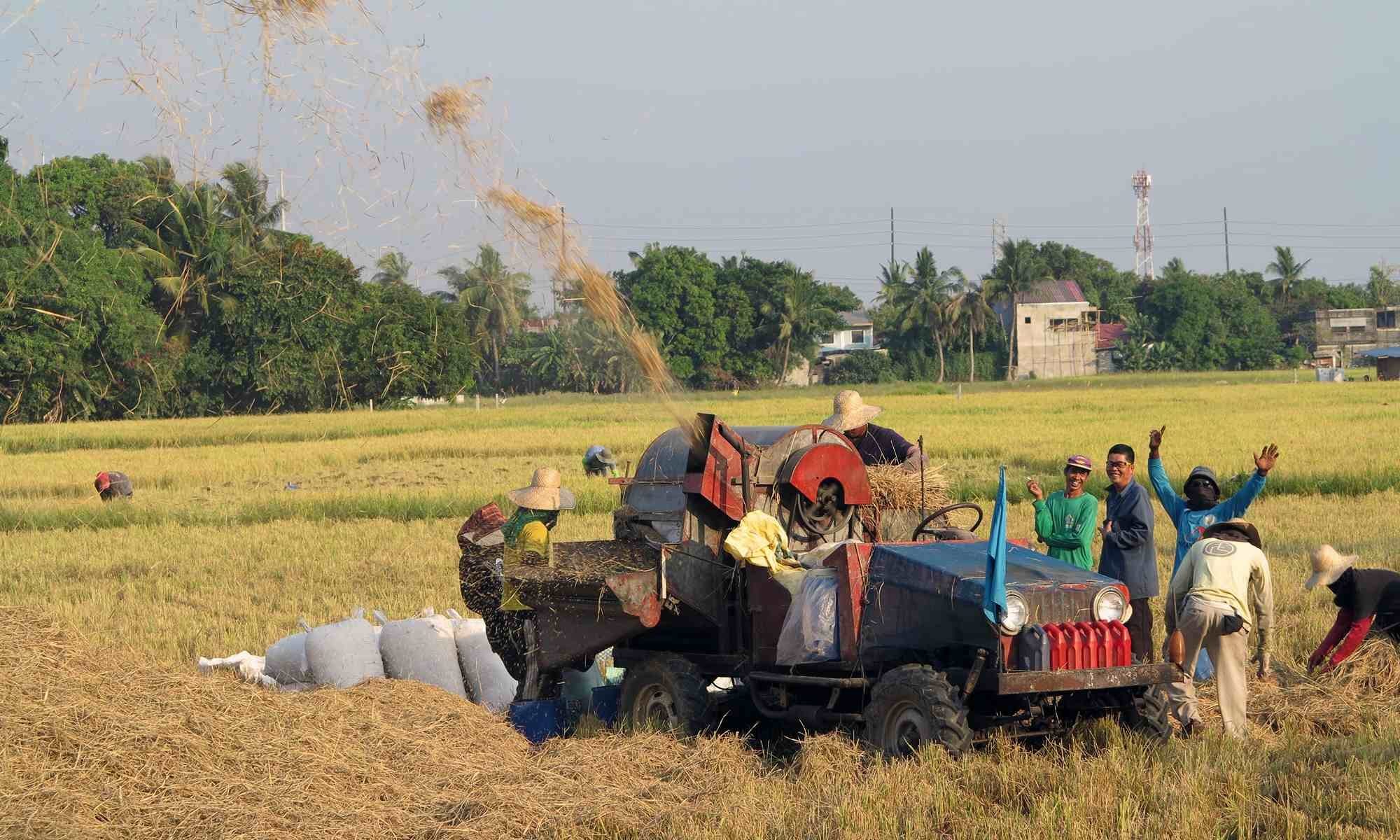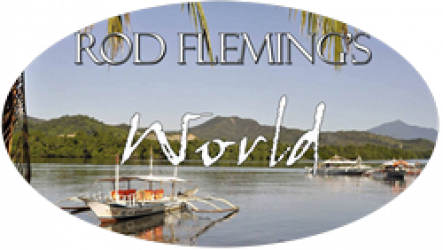Originally posted 2013-04-28 18:07:20.
‘It’s as if a couple of jumbo-jets of Western culture crashed into a container-ship of Asia and the wreckage is still settling.’ These words jump out at me as I read over my notes. And it’s true; the Philippines is a cultural conundrum, a Rubik’s Cube of interlaced and interlocked themes, memes, images and sensations.
It’s not like India, where the veneer of Westernism added by a couple of hundred years of British domination is so thin it seems as flimsy as a bride’s veil, yet definitely attached, as if the bride herself is shy about lifting it, nor Thailand, where Western cultural influences seem grafted on, bizarrely co-exiting with something older and fundamentally opposed. Instead, the Philippines is a genuine melting-pot, a sculptor’s crucible where metallic elements are alloyed to make something completely new. The roots of European culture here go deep, deep into the fertile soil of Asia, and the resulting foliage is strange, at once familiar yet surprising.
[kofi]
Indeed, the very familiarity—the ‘Hello sirs’, the public announcements, the fact that bills are called ‘Invoices’, is deeply unsettling. Listening to a couple of Filipinos speaking Taglish, where streams of melodious yet incomprehensible—to me—Tagalog are peppered with phrases in English…blahdeblahdetelevision seriesblahdeblahdeOhdon’tworryblahdeblahdehighspeedinternetconnectionblahdeblahdeyesof course…leaves me more confused than had no words at all been recognisable. And Tagalog, the principal language of this macrocosm, has already adopted huge numbers of Spanish loan-words and phrases…the days of the week, the months, words like ‘pero’, ‘but’…Indeed, while Filipinos speaking English—which they do very well—often claim to have American accents, to my ear, they sound Hispanic. There is something disconcertingly European about this profoundly Asian country.
[kofi]
The Spanish and other invaders
This is natural, of course. The Spanish colonised these islands in the 16th century and were here for over three hundred years. As well as a delightful accent, they gave the locals the most obvious of the European cultural influences, one that pervades the society: Roman Catholicism. Over 90% of Filipinos are Catholic, and most are devout. Christ is everywhere, on jeepneys, on shops, on tee-shirts…and every street-corner has a church or chapel. Beautiful and ornate but definitely Spanish cathedrals are everywhere, and on Sundays they are rammed. Most have three masses back to back and I have yet to see one where the congregation within the church was not joined by a hundred or so believers outside for whom there was simply not enough room. Indeed, many churches, like that in Manila’s historic Paco Park, have loudspeaker systems so that the priest’s words can be broadcast to the crowds outside.
 The Americans
The Americans
The Americans helped the Filipinos finally oust the Spanish at the end of the 19th century, but then, like the Saxons invited to protect Britain from Viking attack, they decided to stay a while. Were it not for outbreak of war 1941, which saw yet another wave of colonisation imposed upon the islands, this time by the Japanese, I do believe they would still be here, running the place for their own interests. But after that global catharsis, and the horrific atrocities perpetrated against everyone in the Philippines, Uncle Sam, perhaps surprisingly, packed up, leaving only a few military bases, like the naval port at Subic or the airfield at Clark. The Americans left behind them the tradition of driving on the right, of armed police and security guards, of calling crisps ‘chips’ and chips ‘fries’– and, of course, an education system that operated in English, which is why Filipinos, at least the educated ones, speak it so well.
But deeply-rooted though this European—and American—culture may be, the soil in which it is implanted is unmistakably and forever Asian.
[kofi]
Arrival
Arriving at Manila’s Ninoy Aquino International Airport—known by everyone as ‘NAIA’ is culture shock identified. Not because the airport is huge, like Heathrow or CDG or the vast, grimly functional Beijing, which for some reason always reminds me of George Orwell, but just because it is so small. It almost feels like home, like Edinburgh or Lyon Saint-Exupery. The scale is human. The charming immigration official chats in English, asks how long you want to stay—Europeans get an automatic three-week visa on arrival—and gives some helpful hints about where to visit before stamping your passport with a flourish and waving you on with a dazzling grin. (Why is it, by the way, that immigration officials always pick some obscure page near the middle of the passport to stamp? Someone must know.) The same at customs, where the officer just smiles and nods you through. Of course your guard, already weakened after a long-haul flight, instinctively drops, leaving you open to total confusion when you walk out of the air-conditioned cool of the terminal into 32-degree mayhem and blazing sunshine to try to get a taxi.
I stop and take stock. At least half a dozen guards surround each exit, all heavily armed with pistols or sawn-off, pump-action shotguns, and bear in mind, these are not police or military, but civilian security. The military have fully-automatic weapons and look terrifying. The guards all smile and seem happy to see me, somewhat belying the intimidating nature of their weaponry, though I am to discover that not only are armed guards like this everywhere, but that’s how the Filipinos like their security. Serious. Anyway they are amiably ushering me towards a small kiosk.
[kofi]
NAIA taxis
‘Taxi, taxi,’ they insist, while leading me away from the line of parked cabs.
‘No,’ I say, ‘I’m meeting someone.’
‘Okay, no taxi. Good day sir.’
That was my first mistake, I later discover. The kiosk hands out official fixed price taxi warrants to legitimate overseas visitors, which make a considerable saving over the regular airport metered-taxi rate, which is, by the way, double the ordinary, city, metered-taxi rate. However, old hands arriving at NAIA know to take the elevator to the third floor, which is where the Departures concourse is, walk all the way through to the furthest entrance, which is also the exit and in typical Filipino style, the only one without a group of smiling armed security, cross the road and pick up one of the town taxis that has just dropped off a fare. This is supposed to be against the rules, but since the smiling armed men will direct you and help you find a cab, I think we can assume it is just one of those rules that is most observed in the transgression.
[kofi]
Meeting a ladyboy for the first time

I was unaware of all this, however, as I stepped out of the Arrivals concourse two floors below. My flight had arrived at 1130 and the wave of heat and petrol fumes that hit me as I left behind the comfortable air-conditioned interior was enough to both sap my strength and affect my judgement. Likely, had my vision not already been blurred by hours of flying and lack of sleep, it would have defocussed my eyes as well. On the far side of the road, away from the kiosk, were hundreds of people, not one of whom I recognised. But I had arranged to meet someone here, my guide for this tour, a ladyboy called Crissy. My flight was forty-five minutes late, and I had worried that she might not have waited; but fortunately my phone had already picked up the local network and I had texted her while I was clearing Immigration. So she knew I had arrived at last, but I could still see no sign of her. I texted again, and this time was rewarded with a reply: ‘OK. I can’t see you. I’m in the crowd. Wait.’
It turned out that the crowd on the other side were being kept at bay (by more smiling armed guards) to keep the exit clear. I crossed the road for a closer look but I could see no-one resembling her picture. I turned back towards the taxi-rank and there she was, appearing out of nowhere.
Crissy was tall, about five foot ten, with long black hair and a strikingly beautiful face. She was wearing very tight blue jeans and a black top with strappy sandals. She looked a little nervous and maybe even worried, but she was open and friendly and kissed me warmly. Her kiss betrayed her feelings, though, stiff and unyielding. At first I thought that this was because she was a ladyboy, but I later discovered I was wrong; she was just nervous.
I had met Crissy online a few weeks beforehand and liked her right away. She was open and funny, with a charming attitude. I had soon decided to ask her to join me on a tour of the Philippines, something I had been planning. This she agreed to with enthusiasm, and so the date was made. However, I must admit to being as nervous as she was on that first meeting.
[kofi]



